| What About This New Class? | What a Great Way to Spend Our Time at The End of the World | |
| Irish Ceili Dance Class | The Importance of Eye Contact in Manual of Scottish Country Dancing | |
| Scottish Dance Road Trip to Oregon High Desert | Betwixt And Between | |
| Memories of a Ft. Worden Weekend | Calendar of Events |
The reasons for starting this new class, Dem, Prep, and Classics, are many.
With over thirteen thousand Scottish Country Dances to choose from, it is unlikely that you'll get truly familiar with many of them in regular classes. And while we teach dancing (learn the formations and footwork, and you'll be able to go anywhere and dance any dance from just a brief) as opposed to dances, it's nice to have a small repertoire of dances in your head. If you are a dancer who wants to dance when you travel, that small repertoire can help you feel a lot more comfortable.
But how do we know which dances are good ones to learn?
Campbell Tyler in South Africa has been collecting dance programs from all over the world - as many as he can get his hands on - for over four years now, and has been compiling lists of the most frequently danced dances. So we will concentrate on dances from the top of the list in order to improve the odds.
Another thing this class can do is help prepare dancers for programs outside our area. We spend a good deal of regular class time doing dances for our own programs. If you are planning to dance somewhere else, and have the dance program, I encourage you to request that we dance the dances on that program that you are unfamiliar with.
From time to time we schedule demonstrations of Scottish Country Dancing, as you probably already know. If the class time is needed for practice, the class can be turned over to the leader of the upcoming demonstration.
As many of the dances we will be doing will be of a more intermediate to advanced nature, dancers should have had at least a year of dance instruction, and be comfortable dancing most standard Scottish Country Dance formations. On the other hand, if you'd like to try the class and haven't had the requisite year of instruction, or if Tuesday is the only day you have an opening, please contact Linda Mae, and we'll work something out.
Dem, Prep, and Classics will be held 1st and 3rd Tuesdays, 7:30-9:00pm, starting on November 6th, 2012 at Columbia Dance Center, 1700 Broadway, Vancouver, WA. Teacher - Linda Mae Dennis. $3 per person
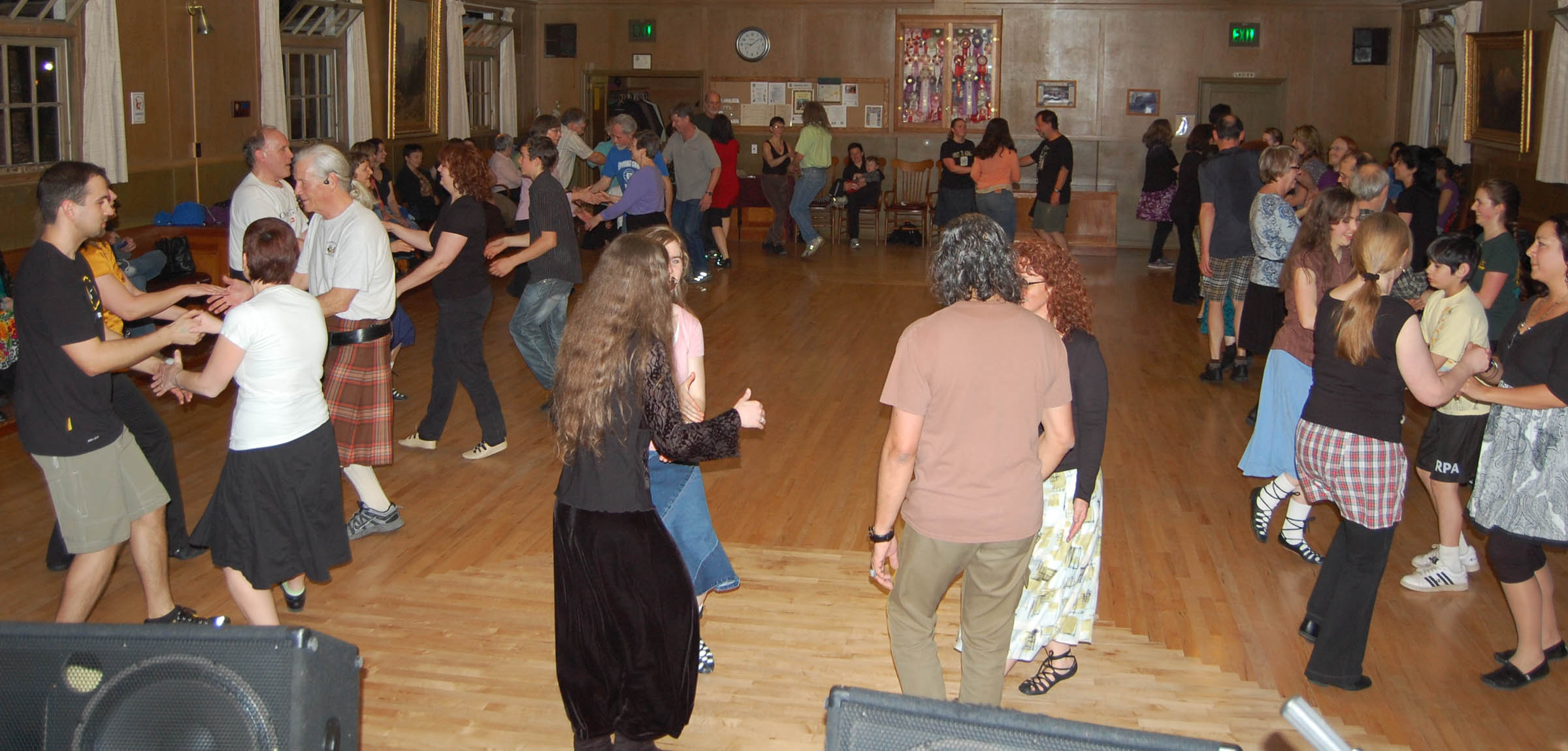 |
I attended the Monday Irish Ceili Dance class, 4231 North Interstate Avenue Portland, 7:00-9:00pm, $3 per person, and enjoyed an evening of dance instruction and social interaction with 12 dancers: Sam, Anne, Bette Lou, Ben, Harry, Carol, Carol S, Patti, Jeannie, Scarlet, Valerie, and Cecily.
Sam Keator teaches the class and is joined by his wife Anne. Learning Irish Ceili dance is similar to Scottish dance. I observed a more continuous level of aerobic motion and found myself drinking plenty of water. The footwork is a walking skip change ("two-step") rhythm. I liked dancing the "7's and 3's" step, and the Irish Swing is thrilling. Sam likes to join in the dances while teaching them. He taught some Scottish dances during the evening, including Postie's Jig. Sam possesses a high degree of social appeal. He is enthusiastic and jokes a lot with dancers. He calls a dancer's name and asks them to guess the CD track number of the tune he is about to play. Sam knows Portland Scottish dancers Don & Linda Gertz.
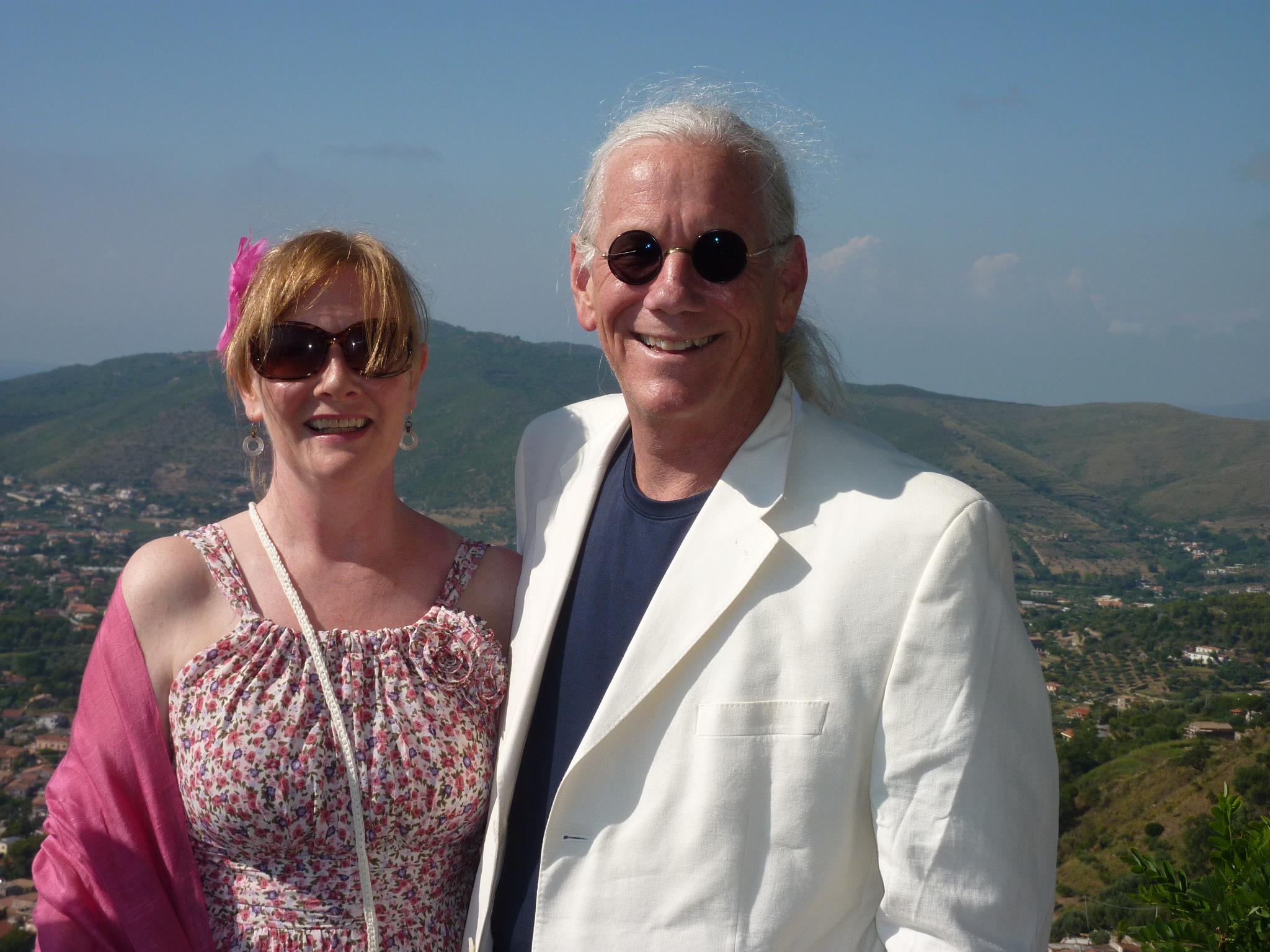 |
| Sam and Anne Keator |
The class takes a 20-minute social break at 8:10pm. I happened to attend birthday week with cake and cookies. Sam delivered announcements and introduced me as a first-time Irish dancer, and revealed to me for the first time that a new dancer is expected to sing a song. I had to think fast and I selected the brief "McGinny & McCarthy" song.
I met Valerie Clatworthy who has Scottish danced in Ashland and the Marshall center class. She attended the next day's August Mixer Scottish dance. Thanks to Sam and friends for their hospitality, and I look forward to meeting new Irish Ceili dance friends.
We can visit these websites to learn about Irish dance & music & culture:
https://irishpdx.com; Sam and Anne arrange Irish entertainment
http://www.oregonirishsociety.org; All-Ireland Cultural Society of Oregon
Six Scottish dancers from Vancouver/Portland enjoyed a road trip of camaraderie, hiking, and dancing with Bend and Eugene friends, surrounding the October 6 2012 Oregon High Desert Workshop and Ball.
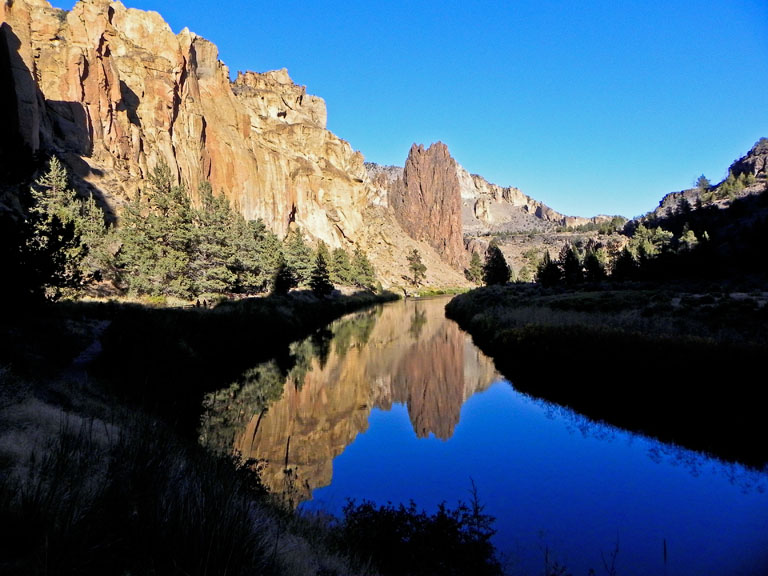 |
| Smith Rock |
| At The Ball |
Martin MacKenzie's van departed Friday morning with Holly Gibson, Liza & Tom Halpenny, and Susan & John Shaw, for a drive over the Mt Hood pass and into the Oregon High Desert on a warm fall day. The group briefly inspected the Crooked River Gorge before resuming the drive to Smith Rock for a two-hour hike. Holly led climbers to the top where they observed panoramic views, then descended from the back side to view the Monkey Face formation and continued along the Crooked River to return to the starting point.
The group proceeded to Redmond and arrived at Fred Kowolowski's home where we were hosted for two nights. Amy Stinard from Bend and Deborah Ash from North Hollywood CA arrived to join us to walk through the Ball dances.
Friday ended with 14,800 pedometer steps, above the 10,000 daily average. Last year I had logged 27,800 pedometer steps during the Workshop and Ball Saturday, a personal record at the time. I was curious whether I could surpass last year's count from walking multiple times the one-mile distance between Fred's home and the venue, and dancing the workshop and ball.
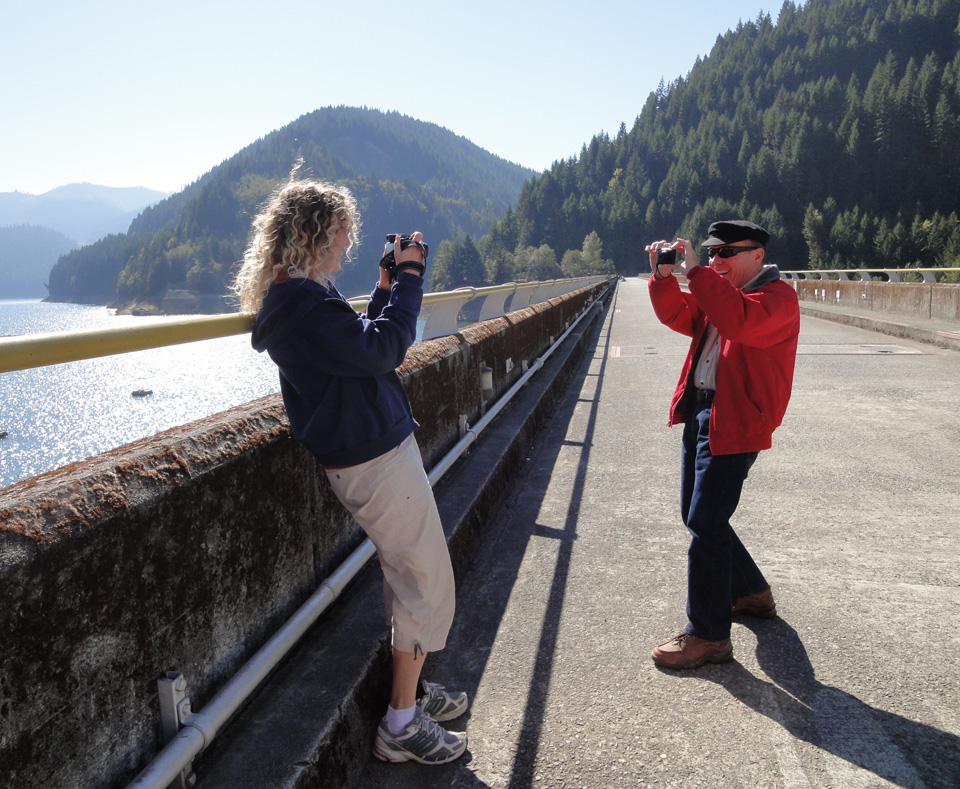 |
| Double Exposure |
We arrived at the Saturday workshop and greeted friends from Bend and Eugene. Seattle Scottish Dance teacher Eileen Hsu led the Saturday workshop and helped three sets of dancers improve our dance technique. She introduced the term "whumping" when dancers fail to finish their steps while coming to a stop. The final "hop-step-close-step and close" becomes "hop-step-WHUMP" with a WHUMP sound as they pull their feet together, landing on their heels. Pivot whumping happens when a dancer needs to rapidly pivot around or back into place while whumping. Eileen had dancers imagine a laser beam firing from the toes; we want to keep toes pointed down in order to zap the bugs on the floor and avoid zapping our fellow dancers.
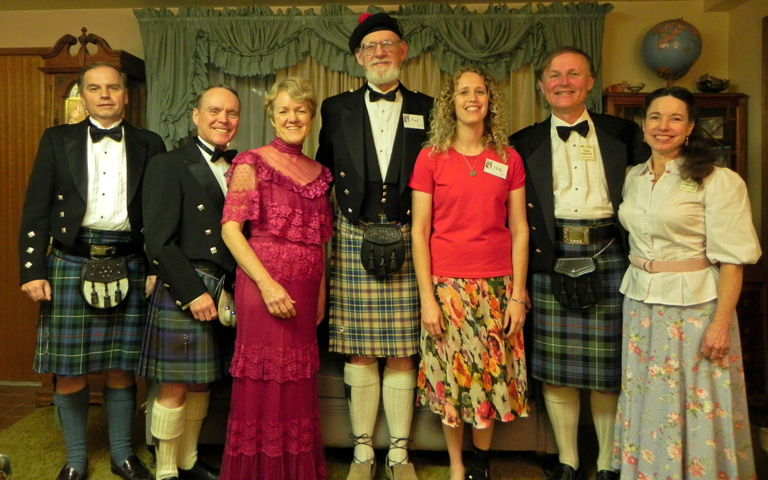 |
| All Dressed Up And Someplace To Go |
We were well prepared for the evening ball program from the Friday walk through, and the social camaraderie among dancers was in high gear from the day's workshop. Local Celtic band "A Scottish Heart" piped in the dancers and provided music for the energetic ball dance program. We returned to Fred's home for the after party, and I ended the day with 26,300 pedometer steps.
The Bend Scottish Dance group hosted a farewell brunch in Sisters Sunday morning, where we had a final visit with dance friends. We proceeded west over the mountains and stopped for a walk across Detroit Lake dam. We completed the drive home and I had a nap for a couple hours to finish the day with a ridiculously low 3,300 pedometer steps.
Fred and I have been promoting a cross-cultural SCD exchange since 2006 by attending each dance group's events and bringing friends to support the group. Our Branch was well represented and we sure had a fun time!
The happy conversation and laughter are still rattling around inside the van. ~ The Editor
Trips to places like Ft. Worden are in themselves rather like a favorite dance; you know what to expect but there are still surprises along the way and you never get tired of them. Such was the case this year with Ft. Worden 2012. John and Susan Shaw, Linda Mae, and I left mid-morning on Friday to give ourselves plenty of time to meander along back roads and small towns before rejoining I-5 near Centralia. It was a welcome break from highway traffic and a chance to see some different scenery. We arrived in Port Townsend in the late afternoon and after a quick trip to the grocery store, where we saw at least one other dancer, headed to the fair grounds and then on to Officers Row. Linda Mae and I joined Marge, Geri, Ross and Kay Morrison, and Laura Hammond in "our house," while the Shaws were next door. The weather was perfect and there was plenty of time to enjoy it before leaving for the welcome dance.
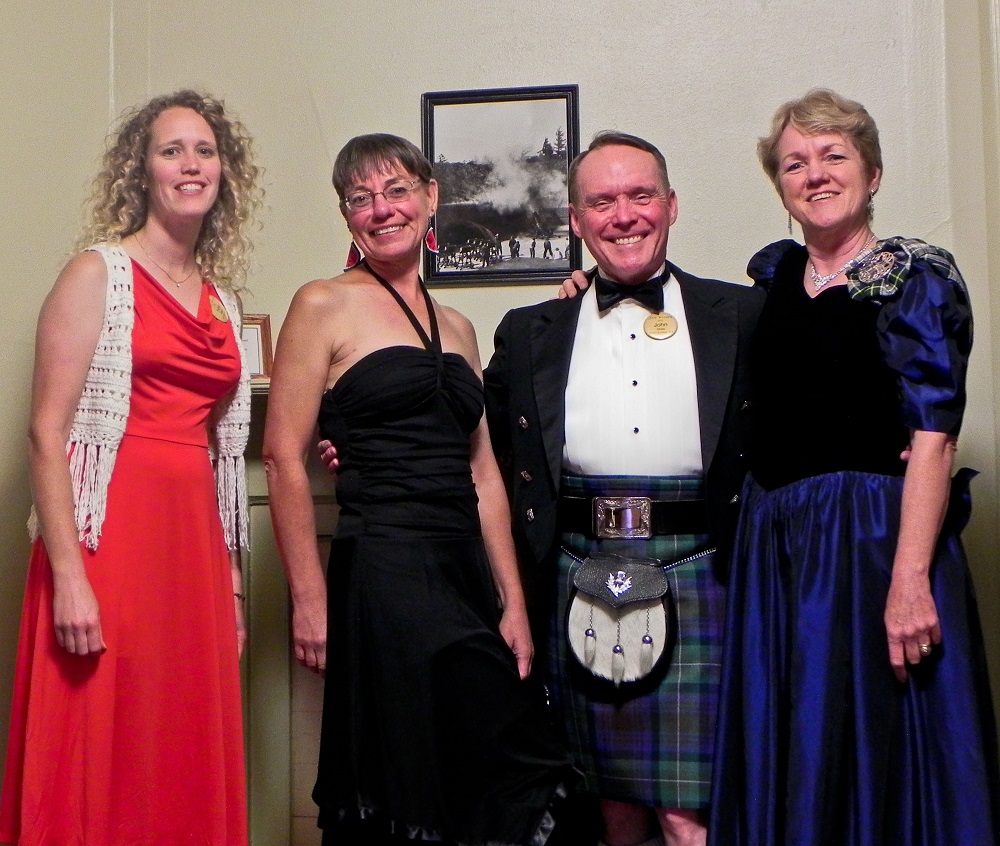 |
The music on Friday was provided by Elke Baker and Lisa Scott. The room was soon filled with happy dancers as we made our way through new dances and old favorites (Da Rain Dancin' being chief among the favorites). After the dance, it was time for the ceilidh. There were several great acts but one that really stood out was a duet by a fiddler and a guitarist. That was a new combination for me, but it was very well done and when they did a second piece with Muriel Johnstone, it was a real treat.
Morning came soon enough (along with a beautiful sunrise) and it was soon time for the first class. There was some last minute scampering but everyone made it to the first session in time. The teachers this year were Muriel Johnstone, Ron Wallace, Gordon Robinson, and Linda Henderson. John, Geri, and I took Muriel Johnstone's class on why some dances survive and others don't, what part the music plays (no pun intended) in whether or not a dance is popular, and how the music has changed over time. We did a number of dances with well known lead tunes to different tunes as well as strathspeys in jig time to get a better understanding of what makes a dance either last for centuries or never make its way onto a ball program.
 |
Next on the agenda was the Highland Step class with Linda Henderson. Linda Mae joined John and me and soon Linda was demonstrating the steps we would need to learn in order to dance The Falls of Shin, a demonstration dance first performed at a Highland Games in California. We were separated into lines of three dancers across with the pattern taking up roughly a large square in the room. There were about five to six lines of three and we must have looked like so many squiggles as we jumped, set, and skip changed to the tunes of Sleepy Maggie and Tail Toddle. It was quite a challenge but very fun to learn.
After that it was lunch time and a chance to enjoy the beautiful weather. After lunch, Linda Mae and I were in Gordon Robinson's class called Way Out West. He focused on dances with unique figures that were created by west coast (that includes the western part of Canada) devisers. Tim Wilson's chaperon chain progression and a dance devised by Richard Bennett (who was in the class), with a continuous half reel, were two of the figures on the menu.
We had a few hours for this and that after class and it was spent either exploring up above the fort (we now believe the brochure that says there are 10 miles of trails nearby), walking along the beach, or just relaxing. Soon it was time for the ball and before we knew it, we were getting ready for the Grand March. Elke Baker and Lisa Scott were joined by Calum MacKinnon. The music had been wonderful the previous evening, and the addition of Calum raised the energy level another notch. The last dance was The Montgomeries' Rant and anyone who had been too tired to be on the floor for previous dances seemed to have renewed energy when the music started to play.
Sunday morning came all too quickly. We packed up the car and headed back to the hall to turn in keys, buy CDs and, of course, do some more dancing. The four of us stayed for most of the Sunday session before heading home with a stop for a picnic lunch on the way. After two wonderful Fort Worden weekends in a row, I'm starting to think maybe lightning can strike twice in the same place.
Just this October 27th, we held our fall dance themed, "Armageddon:
The End of the World as We Know it, BUT Tomorrow is Another Day!"
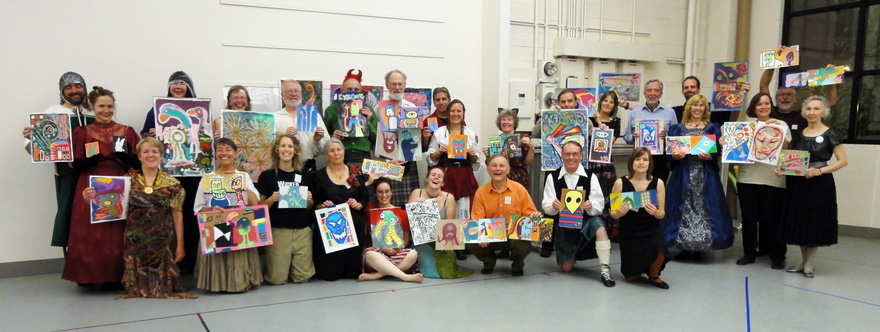 |
| Artfully Done |
We experienced incomparable, wonderful, uplifting music courtesy of Lisa Scott and Leslie Hirsch.
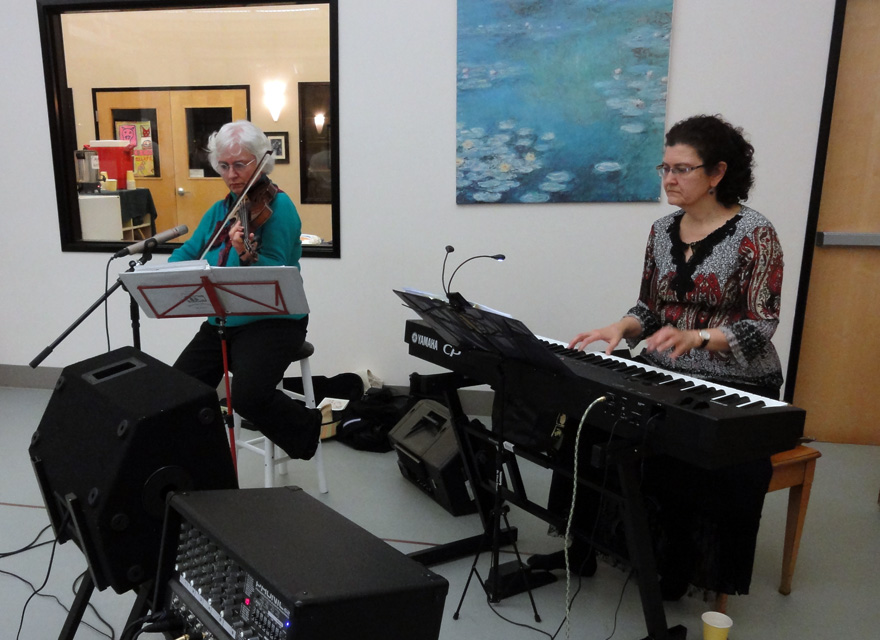 |
| Our Treasures |
And, of course, we enjoyed all these smiling faces.
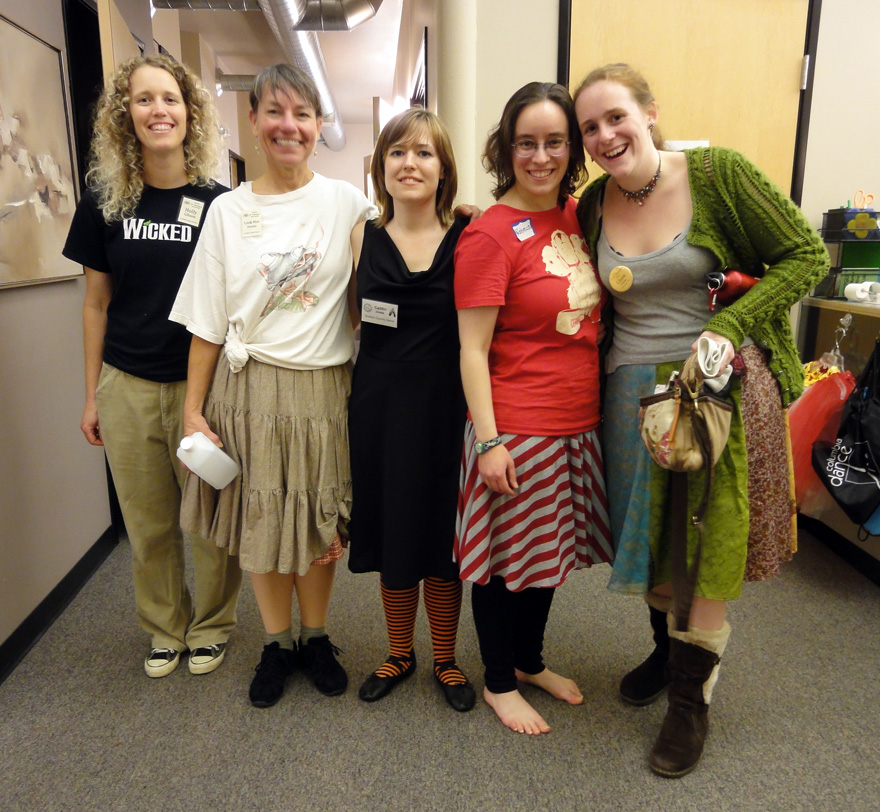 |
| A Bevy of Beauties |
Social eye contact is a quality I have admired about Scottish Dance. I read the online Manual of Scottish Country Dancing to learn how the topic is presented. I was surprised to discover the topic is not specifically mentioned.
http://www.rscds.org/images/stories/epub/manual13june.pdf
I was able to find a related passage about covering as an important feature of good teamwork; however covering can be accomplished without eye contact. There is a reference to looking at partner during bow/curtsey. There are two indirect references to looking at partner during set and cast off or cast up, and two references to acknowledging partner, as if looking at partner had previously been discussed. There are numerous references to direction to face, however no guidance for where the eyes are looking.
If the Manual doesn't discuss eye contact, what is the source of this social dancing skill?
I attended the recent TAC Summer School teacher candidate training sessions in Portland as a stooge and had the pleasure of meeting thirteen teachers who were preparing for their full certificate exam. I observed that all teachers taught the importance of good eye contact. I spoke with some of them and reported that the Manual does not discuss the topic, and inquired their take on the subject? All teachers confirmed the importance. A theory was proposed that giving eye contact is a North American custom and is not stressed in other parts of the world like the UK.
I was able to test the theory when I met Ruth Beattie, the current chairman of the RSCDS, who was attending TAC Summer School from Scotland. I asked her whether giving eye contact is an important quality of Scottish Dance in Scotland? She replied, yes, very important in Scotland and everywhere in the world. I mentioned that eye contact is not mentioned in the Manual, and I wondered what is the source of this practice that is taught by all teachers? Ruth speculated that the social part of dancing was not a focus of the Manual as much as the dance techniques. She agreed that the next update of the Manual (which is happening now) could contain a sentence or paragraph about the subject. A follow up letter from RSCDS stated its omission from the Manual is a thought provoking topic and one which will be of great interest to the Manual Review Working Group.
Here is the dance program for Betwixt And Between;
Well Done Jack 32J3 RSCDS Bk. 29
Donald Bane 32S3 RSCDS Bk. 17
De'il Amang the Tailors 32R3 RSCDS Bk. 14
Barley Bree 40J4 RSCDS Bk. 13
Light on the Water 32S3 Bk. Let's All Dance
Flowers of Edinburgh 32R3 RSDCS Bk. 1
The Bramble Bush 32J3 RSCDS Bk. 25
Grey Daylight 32S2 (six times through) Bk. Let's All Dance, Too
The Reel of the Royal Scots 32R3 RSCDS Leaflet
Happy dancing,
Marge
Calendar of Events
Nov 6: Dem, Prep, and ClassicsDem, Prep, and Classics will be held 1st and 3rd Tuesdays, 7:30-9:00pm, starting on November 6th, 2012 |
Nov 10: Portland Social DanceWaluga Hall, 417 2nd St., Lake Oswego, OR, 7:30pm. Live music! Bizarre Bazaar fundraiser, also |
Nov 16: Third Friday Irish Ceili DanceNovember 16, 2012: 3rd Friday Irish Ceili Dance at the PPAA |
Dec 8: Portland Social DanceWaluga Hall, 417 2nd St., Lake Oswego, OR, 7:30pm |
Dec 28: Betwixt And Between DanceThis dance is for anyone who is here in Vancouver between Christmas and New Year's. |
December 31: Portland Hogmanay DanceCome join us for a true Hogmanay Dance this New Year's Eve! |
Starting January 3, 2013: Dancing at Maple Grove SchoolBattle Ground, Maple Grove School, 610A SW Eaton Blvd |
Starting January 9, 2013: Dancing at Marshall CenterVancouver, Marshall Community Center, 1009 E. McLoughlin Blvd |
January 26, 2013: Burns DanceDance in Eugene, Oregon celebrating the life of the Ayershire Bard, Robert Burns |
| Do you have an item of Celtic interest you would like to see in print? | ||
| You can contact me in any of the following ways: | ||
| By mail: |
| Martin MacKenzie | |
| 10701 SE Hwy 212 C-7 | |
| Clackamas, Or 97015 |
| By email: |
| The Scottish Country Dancer is a bi-monthly publication of the RSCDS Southwest Washington State Branch, a non-profit educational organization. For changes of address, please contact Martin MacKenzie, 10701 SE Hwy 212 C-7 Clackamas, Or 97015, mgraemem@gmail.com. The editor reserves the right to alter or edit any material submitted for publication for reasons of taste, style, or clarity. All materials for publication should be sent by email to the editor at the address above, preferably in straight text. Deadline is one week before the end of the month prior to publication date. Editors of other newsletters may use or adapt any materials in the Scottish Country Dancer unless a specific copyright notice is included. Please credit author and original source. |